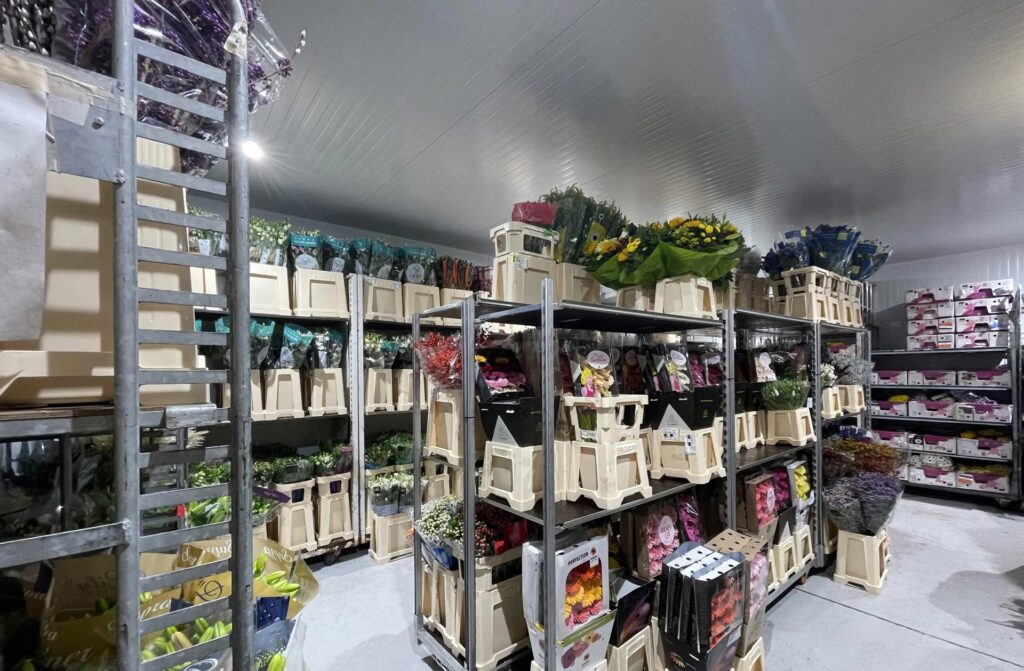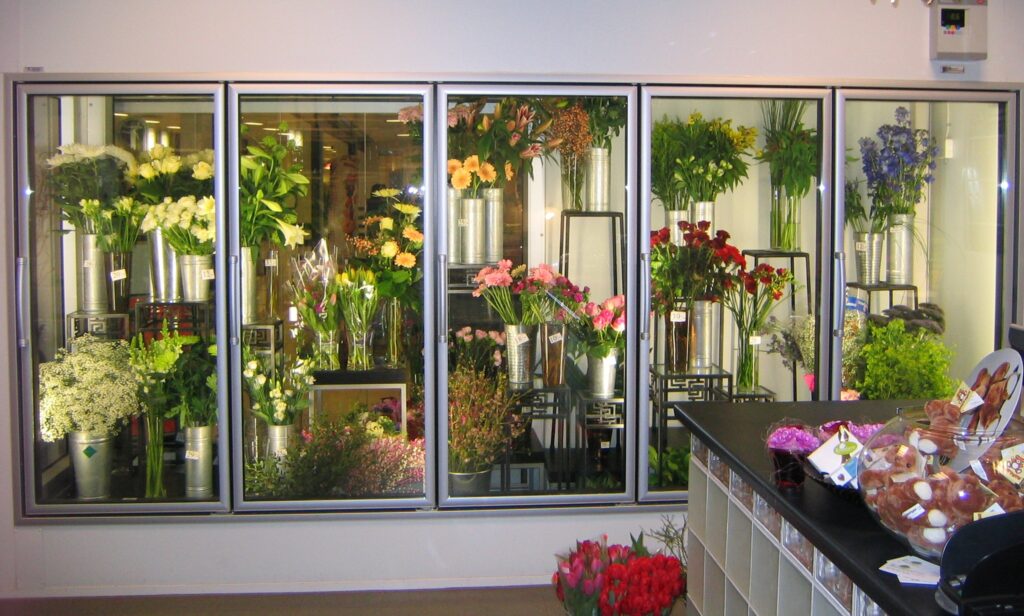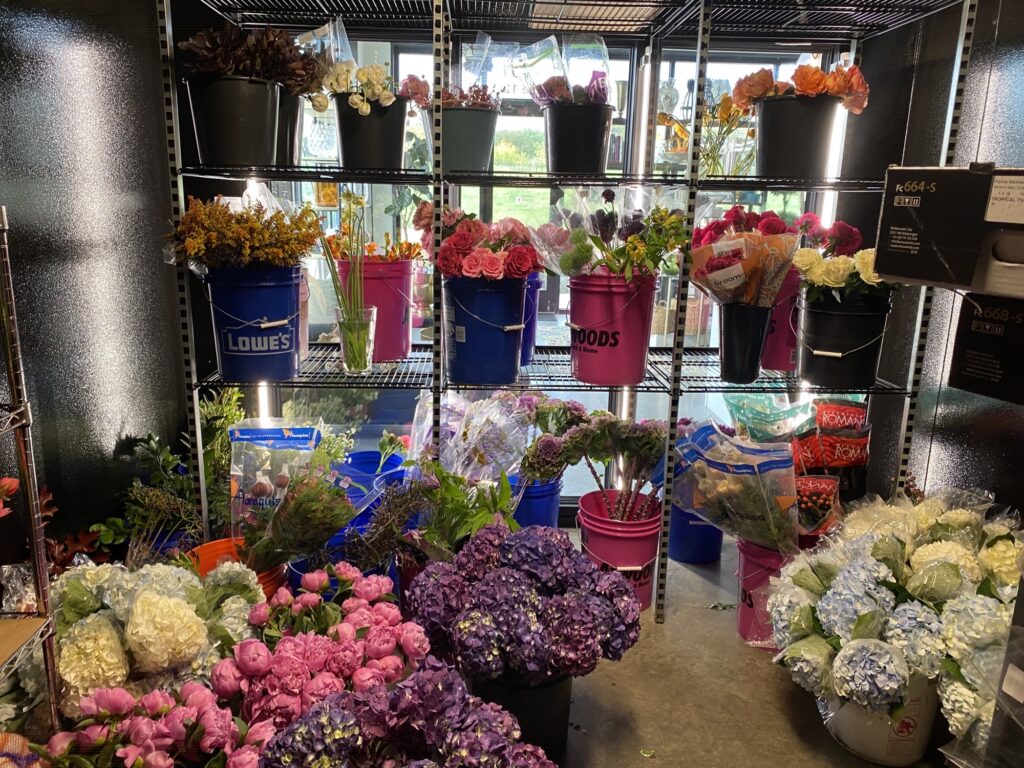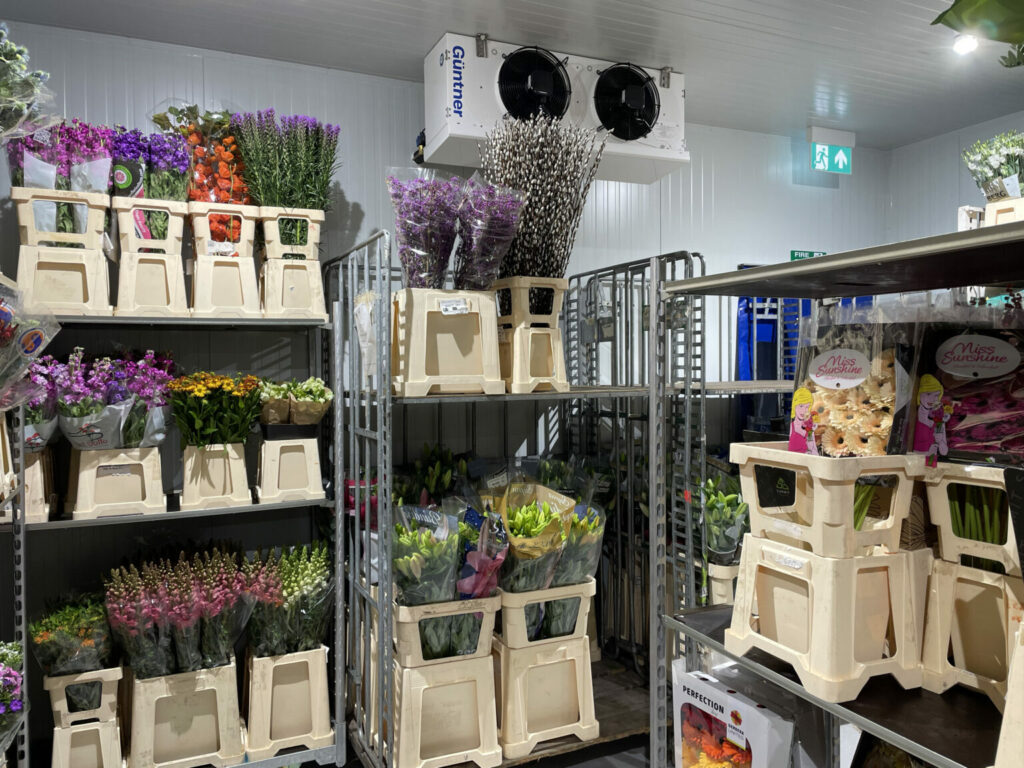Flower cold room gives florists and suppliers a reliable way to store flowers longer without losing beauty or fragrance. It differs from normal cold rooms used for food or medicine. The temperature range, humidity level, and air circulation must fit the unique needs of different flowers.
The Difference
Normal cold rooms focus mainly on temperature control. They keep products like meat, fruit, or dairy within specific ranges to slow bacterial growth or oxidation. For example, a fruit cold room usually works at 0–10°C with 85% humidity. The airflow inside moves fast to keep the products evenly cold.
Flower cold rooms, however, require gentler conditions. Flowers are living organisms that breathe and release moisture. If the temperature is too low or airflow too strong, petals wilt or dry out. The ideal temperature range is usually 2–8°C, depending on the flower type. Tulips need around 2°C, while tropical flowers prefer near 10°C. Humidity should stay between 85% and 95% to prevent dehydration.
Another major difference is airflow speed. A normal cold room may use an air velocity above 1.0 m/s, but a flower cold room usually maintains 0.3–0.5 m/s. The slower airflow avoids direct chilling and moisture loss.
Lighting is also unique in flower storage. Normal cold rooms stay dark, while flower cold rooms use soft LED lighting to let workers sort and display flowers without heat.

Finally, the cooling system in flower cold rooms often includes microclimate sensors. These sensors balance temperature and humidity in real time. In one florist’s case in Singapore, installing such a system extended cut-flower life by 30%, reducing daily waste from 8% to 5%.
Key Characteristics
A flower cold room must combine precision, stability, and safety. The key characteristics include temperature accuracy, humidity control, ventilation, and material quality.
Accurate temperature control. Flowers are sensitive to change. A 2°C fluctuation can shorten their lifespan. Digital temperature controllers help maintain stable conditions. Many use PID (Proportional-Integral-Derivative) systems to react fast to small variations.
High humidity maintenance. Flowers lose moisture quickly in dry air. Humidifiers or atomizers keep humidity near 90%. For example, orchids stay fresh for up to 21 days at 10°C and 92% humidity.
Soft air circulation. Air should move evenly but gently. Fans must have low speed and noise to avoid damaging delicate petals. Some cold rooms use air deflectors to spread cool air without direct blowing.

Clean and odor-free space. Flowers absorb odors easily. So, materials inside the room—such as panels and flooring—must be odorless and resistant to mold. Stainless steel shelves and aluminum flooring work well.
Backup power and monitoring. Flowers are high-value goods. Any failure in cooling can cause big losses. A reliable power backup and alarm system ensures continuous operation.
Energy efficiency. Using polyurethane (PU) insulation panels of 100 mm thickness reduces energy loss. In a 20 m³ flower cold room, such insulation can save up to 15% electricity monthly compared to 75 mm panels.
These features make the flower cold room both gentle and efficient, keeping each bloom at its best stage longer.
Design Principles
Designing a flower cold room requires balance between technology and nature. Every design step must protect the freshness of flowers.
Determine storage needs. Identify flower types, storage quantity, and turnover rate. For example, a 50 m² flower shop needs about 10 m³ of cold storage for daily stock. Wholesale facilities may require over 200 m³.

Choose proper temperature zones. Not all flowers need the same temperature. Designers can divide the room into zones—2–5°C for temperate flowers like lilies, and 8–10°C for tropical varieties like orchids.
Plan airflow layout. The air outlet should not face directly toward flowers. Ceiling-mounted evaporators with air diffusers spread cool air gently. Good layout prevents condensation on petals and uneven cooling.
Use suitable materials. Wall and ceiling panels should have high insulation and anti-mold coating. Polyurethane or PIR sandwich panels work well. Aluminum or stainless steel surfaces resist moisture and are easy to clean.
Add lighting and display function. Flower cold rooms in retail settings often double as display areas. Using soft white LED lights (around 4000K color temperature) enhances color without heat.
Include a control system. A smart controller that records data helps track temperature, humidity, and fan operation. Remote monitoring allows quick maintenance.

A well-designed flower cold room helps flowers retain moisture, color, and scent longer, making storage not just functional but also visually appealing.
Production and Installation Considerations
Building a flower cold room demands precision from factory to site. Each part must match the flower storage standards.
Panel production. Manufacturers usually make PU or PIR sandwich panels with 100 mm thickness and a density around 40 kg/m³. This insulation ensures good thermal stability. Panels are cut with CNC machines for tight fitting.
Door design. Doors must seal well to prevent air leakage. Sliding glass doors work best for flower display rooms. They allow easy viewing and reduce temperature loss.
Refrigeration system. Compressors, condensers, and evaporators should match the cooling load. For example, a 30 m³ room may need a 2.2 kW compressor. Evaporators should use large fins to ensure gentle airflow.

Installation. The foundation must be level and moisture-proof. Installers use silicone sealant to close panel joints. The wiring and drainage should stay separate from flowers to avoid accidents.
Testing and calibration. After installation, the system must run for 24 hours to check performance. Sensors are tested at multiple points. Temperature and humidity uniformity should stay within ±1°C and ±5%.
Maintenance. Monthly cleaning and quarterly filter replacement prevent odor buildup. A florist in Dubai found that regular maintenance extended equipment life by 20%.
Proper production and installation ensure the flower cold room runs efficiently and protects every petal.
A flower cold room is more than just a refrigeration unit. It is a careful balance of temperature, humidity, airflow, and design. Whether it’s a small shop or a large wholesale storage, a well-built flower cold room ensures every bloom stays beautiful from storage to sale.
Post time: Nov-04-2025

